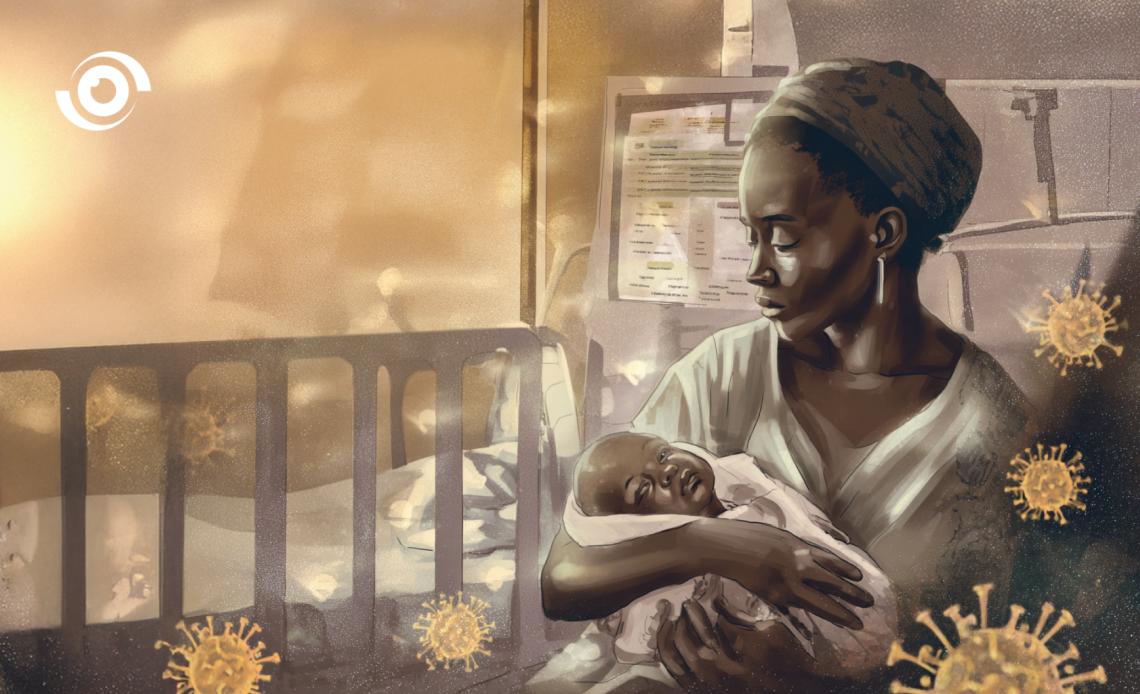Chinwe Catherine Eze and Tzar Oluigbo (Lead writers)
In maternity wards across sub-Saharan Africa, the battle for life is fought on two fronts: against the complications of childbirth, and against infections that refuse to respond to treatment. Antimicrobial resistance (AMR), the ability of bacteria, viruses, fungi, and parasites to withstand medicines that once worked, is quietly undermining progress in maternal health.
In 2023, Chiamaka (not real name), a 28-year-old mother, was taken for an emergency caesarean section (CS) at a teaching hospital in southeast Nigeria. The surgery went as planned, but days later, her wound became infected. Doctors quickly realised they were facing a resistant strain of Klebsiella pneumoniae — a bacterium that naturally lives in the human gut, where it usually does not cause harm, but when it spreads outside the gut, it can cause serious infections like pneumonia, bloodstream infections (sepsis), urinary tract infections (UTIs), and wound or surgical site infections.
It significantly contributes to antimicrobial resistance (AMR)-related mortality, particularly in newborns and mothers in low- and middle-income countries. First-line antibiotics, initial medication recommended to treat a specific infection failed. Second-line antibiotics offered no relief. By the time doctors escalated to carbapenems, a powerful class of antibiotics often called the “last-resort” drugs when other antibiotics fail, it was too late. Within ten days, Chiamaka had passed away. Her newborn survived, but will grow up without a mother. Her case is not an isolated tragedy. Across Nigeria, similar stories unfold daily, though they rarely make it into official statistics. Behind these deaths lies an overlooked but deadly driver of maternal mortality: AMR.
Many health facilities in low-resource settings lack clean water, sterile equipment, or proper infection control, exposing women to bacteria during childbirth, caesarean sections, or after delivery. Early signs of infection, such as fever, pain, or foul discharge, are often missed or dismissed, especially in areas where diagnostic tools are limited. The result is a vicious cycle: poor hygiene leads to infection, delayed detection allows it to progress to sepsis, and widespread antibiotic misuse fuels resistance, leaving doctors powerless when first-line treatments fail. This deadly loop of infection, resistance, and inadequate care continues to drive preventable maternal deaths in many low-resource settings.
The overlooked link between AMR and maternal deaths
Globally, maternal sepsis accounts for 11% to 15% of maternal deaths in sub-Saharan Africa and is the third most common direct cause of maternal mortality. In Nigeria, infections cause up to 15% of maternal deaths, and an increasing proportion of these are resistant to standard antibiotics.

The World Health Organization (WHO) estimates that pregnancy-related infections are responsible for 10.7% of maternal deaths and that infection is at the root of more than 50% of maternal deaths in hospitals.
Despite this, Nigeria’s National Action Plan on Antimicrobial Resistance makes only a passing reference to women as a vulnerable population. While the plan commits to “equitable access” and addressing gender disparities, it falls short of explicitly naming maternal health in its strategic interventions.
Maternity wards, obstetric infections, and postpartum sepsis are absent in the detailed action areas, a silence that risks keeping maternal AMR in the shadows. Without maternal-specific indicators, resistant postpartum sepsis will remain under the radar, and without dedicated budget lines or training for obstetric clinicians, women will continue to be prescribed antibiotics blindly and often ineffectively during their most vulnerable moments.
AMR is not just a medical problem; it is also a gender equity issue. Women are disproportionately affected because pregnancy and childbirth expose them to higher infection risks. If Nigeria is to reverse its stubbornly high maternal mortality rate, maternal health cannot remain an afterthought in AMR policy. We must move from vague commitments to concrete maternal-focused actions such as integrating AMR surveillance into maternity wards, equipping labour units with diagnostics, and training health workers in stewardship for pregnancy and postpartum care.
Diagnostics and health workers must be at the frontlines
The climate crisis is making things worse. Flooding, drought, and shifting rainfall patterns are triggering outbreaks of malaria, cholera, and typhoid, which repeatedly strain already fragile health systems.
In maternity wards, these outbreaks amplify the pressure to act. Without adequate diagnostics, health workers often resort to broad‐spectrum antibiotics as a default practice that fuels AMR.
A recent global diagnostic collaboration led by the Fleming Initiative, the Global Antibiotic Research and Development Partnership (GARDP), and the Foundation for Innovative New Diagnostics (FIND) is pushing for improved diagnostic equity, aiming to bridge diagnostic gaps, especially in low- and middle-income settings.

Elsewhere in other countries in Africa, capacity for AMR surveillance is being strengthened. Kenya and South Africa are building AMR networks with support from the Fleming Fund, and the Africa Centre for Disease Control (Africa CDC) has emphasised diagnostics in its continental AMR strategy.
In Nigeria, some progress is visible. Rapid diagnostic tests (RDTs) for malaria and neonatal sepsis are helping clinicians to make smarter treatment decisions. Though these tools are far from perfect, they offer a glimpse of what better decision-making could look like in constrained settings. Still, these efforts remain fragmented and limited in scale. To truly protect mothers and newborns, we must act on the following urgent priorities:
- Make diagnostics a core investment in AMR and maternal health programmes.
- Deploy solar-powered, decentralised labs to reach rural and climate-impacted zones.
- Train and retain skilled laboratory professionals at all levels of care.
- Embed diagnostic access into national health and climate adaptation strategies.
- Scale local manufacturing and regulation of affordable diagnostic tools.
International collaborations will only go so far if they are not matched by bold national commitments. Countries must embed diagnostics into their maternal health and AMR strategies, allocate sustainable domestic financing, and strengthen regulatory pathways for local innovation.
Partnerships like the Fleming Initiative, GARDP, and FIND can help set direction, but ultimately, the future of safe childbirth in Africa depends on governments ensuring that no woman or newborn faces preventable death simply because a diagnostic tool was out of reach. If maternity wards are to become safe spaces again, diagnostics must become lifelines.
As Nigeria prepares to host the 5th Global High-Level Ministerial Conference on Antimicrobial Resistance (AMR) in June 2026, the moment offers an opportunity and responsibility to ensure the discussions spotlight the devastating impact of AMR on maternal health and drive bold, gender-responsive commitments across Africa.


